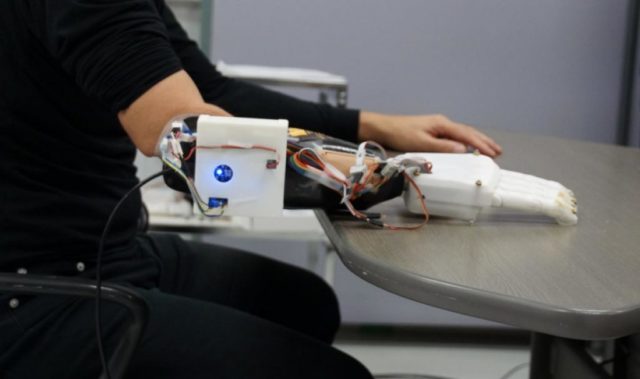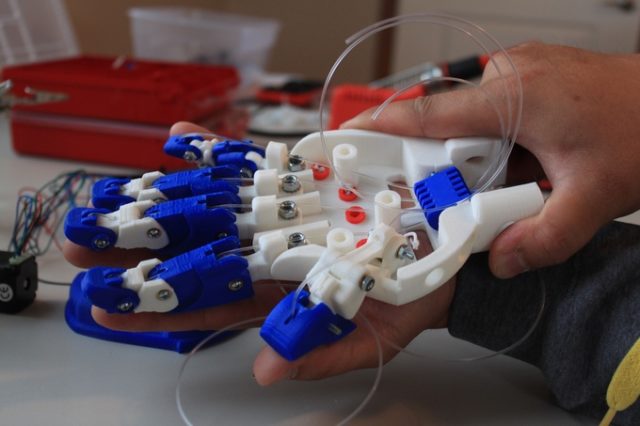Ergonomics for 3D Printed Prosthetics Hand of Society Health within Industrial Engineering
Product Design Engineering (PDE) Program in Binus ASO School of Engineering (BASE) equips students with course namely Ergonomics, known as Human Integrated System. This course is part of Industrial Engineering in PDE Program, interchangeably named as Industrial and System Engineering. Society Health is one of important aspects in our daily life, and is deemed as important aspect to be taught to students, as case study in campus.
Source: ISE Magazine 2019 (Industrial and System Engineering (ISE) Magazine)
3D-printed hand can guess how you play rock, paper, scissors
Prosthetic device uses computer interface, machine learning to copy hand motions

For those who face the daily struggles of losing a limb, prosthetic replacement limbs can be helpful but are expensive and can be difficult to use. Through 3D printing, a lighter and more responsive hand has been created by the Biological Systems Engineering Lab at Hiroshima University.
It includes a computer interface and is the lab’s cheapest, lightest model and more reactive to motion intent. Previous generations of their prosthetic hands have been made of metal, which is heavy and expensive to make. Professor Toshio Tsuji of the Graduate School of Engineering, Hiroshima University describes the mechanism of this new hand and computer interface using a game of “Rock, Paper, Scissors.” The wearer imagines a hand movement, such as making a fist for Rock or a peace sign for Scissors, and the computer attached to the hand combines the previously learned movements of all 5 fingers to make this motion. “The patient just thinks about the motion of the hand and then the robot automatically moves.
The robot is like a part of his body. You can control the robot as you want. We will combine the human body and machine like one living body,” explains Tsuji. Electrodes in the socket of the prosthetic equipment measure electrical signals from nerves through the skin, similar to how an ECG measures heart rate. The signals are sent to the computer, which only takes five milliseconds to make its decision about what movement it should be. The computer then sends the electrical signals to the motors in the hand. The neural network (named Cybernetic Interface) that allows the computer to “learn,” was trained to recognize movements from each of the 5 fingers and then combine them into different patterns to turn Scissors into Rock, pick up a water bottle or to control the force used to shake someone’s hand. “This is one of the distinctive features of this project.

The machine can learn simple basic motions and then combine and then produce complicated motions,” Tsuji says. Hiroshima University Biological Systems Engineering Lab tested the equipment with patients in the Robot Rehabilitation Center in the Hyogo Institute of Assistive Technology, Kobe. The researchers also collaborated with the company Kinki Gishi to develop the socket to accommodate the amputee patients’ arm. Seven participants were recruited for this study, including one amputee who had worn a prosthesis for 17 years. Participants were asked to perform a variety of tasks with the hand that simulated daily life, such as picking up small items, or clenching their fist. The accuracy of prosthetic hand movements measured in the study for single simple motion was above 95%, and complicated, unlearned motions was 93%. However, this hand is not quite ready for all wearers. Using the hand for a long time can be burdensome for the wearer who must concentrate on the hand position in order to sustain it, which causes muscle fatigue. The team will create a training plan in order to make the best use of the hand and hope it will become an affordable alternative on the prosthetics market.

Comments :